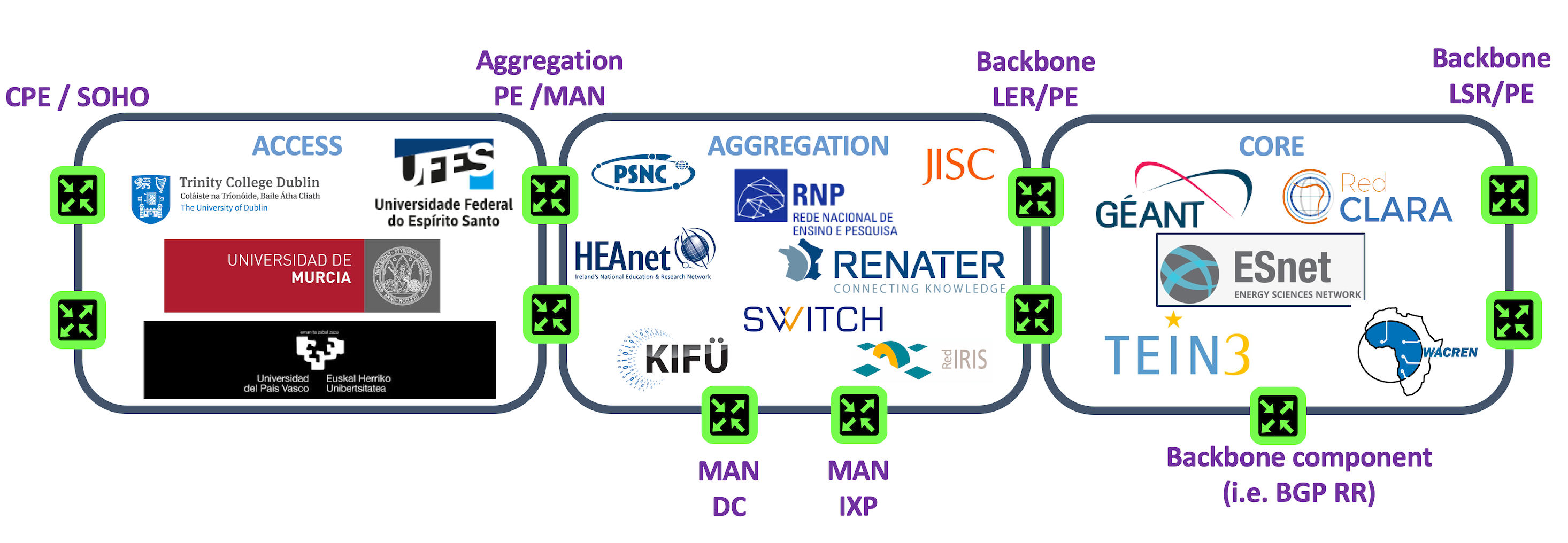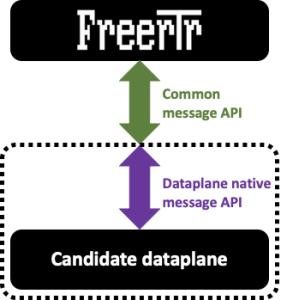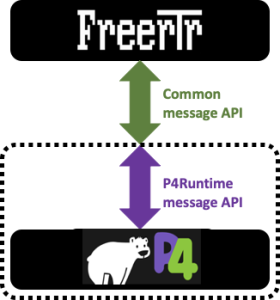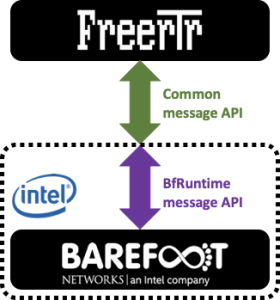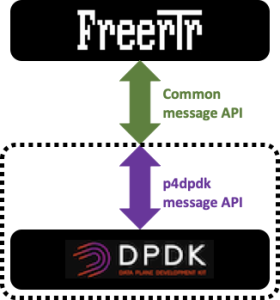Requirement
|
Overview
RARE project objective is to provide a routing platform proposing various solutions addressing multiple use cases in the R&E landscape. In the picture below you see in purple the different use cases:
As you can notice, each use case will run on different hardware that potentially can have different dataplanes. As we were starting from a clean slate environment without much choice, especially with P4 programmability - the first dataplane or P4 target considered was BMv2. BMv2 is an excellent way to learn P4, it is also the first target we use in order to program and validate new features. After 6 months of practising our "P4-fu" we developed:
- a P4lang repository for ubuntu bionic and focal
- a debian 10 repository
- had our first RARE/FreeRouter prototype powered by a P4 BMv2 dataplane !
Our initial work, considering FreeRouter's Java nature, was to write a Java P4Runtime GRPC client that would be able to program the entries in the tables exposed by BMv2 via the P4Info file. However, this would have intimately tied FreeRouter code to P4Runtime gRPC code. Even if it's more natural to choose this solution, going in that direction implied that dataplanes other than BMv2 would be compliant to P4Runtime. It turns out that this is not the case. We then opted for a simple message API via a bi-directional raw UNIX socket. We will see what this means later in this blog.
Motivated by the successful experience with BMv2, we then decided to move forward and started to study TOFINO as a target. We were greedy and eager to apply our P4 code against multi-terabits traffic. After a few P4 program compilations, the first impression from my personal perspective was ... mind blowing ! INTEL/BAREFOOT TOFINO effectively opened the door to multi-terabits packet processing... Just to have at the tip of your finger the possibility to process traffic at these traffic levels was exciting !
As a side note, the journey was not without suffering and pain... We had to port our BMv2 code - and to port to TOFINO was not "Une lettre à la poste"... It is not that TOFINO programming is gratuitously painful. It is just that it is p4c-tofino's job to make sure that our packets are processed at silicon lighting speed. Imagine you are asked to convey parcels by driving from Paris to Amsterdam with a car that has an infinitely sized trunk, with an infinite gas tank and no particular speed constraint along the road. And then you are asked to do the same trip, but with an actual real car that has a trunk with a fixed size and with a 50 litre gas tank, and of course you'll have to follow speed signs along the road.
In the first case, you would put as many parcels as you would like and you even won't bother looking at your gas tank level and maybe you'd set the speed to 200 Km/h. The second case forces you to carefully think about how many parcels you can put in your trunk, check to see if one completely full tank can be sufficient for the trip and of course, you would have to follow the speed signs.
If you allow me this comparison, this is where BMv2 and TOFINO programming differs.
But, this pain was not in vain, it was for the greater good... You can't imagine the inherent joy when you see the TOFINO compiler displaying the DONE word ! For the veterans who can remember, it is the same feeling when you manage to compile your first program in the ADA language. The compiler is not so strict that compiling an ADA program is in itself a feat. No wonder why this language is used in Spatial rocket (Ariane).
Back to our dataplane interface story, even TOFINO and BMv2 share some roots, while BMv2 had P4Runtime as a northnound interface, INTEL/BAREFOOT pushed into TOFINO platform with P4_16 their gRPC interface counterpart: BfRuntime.
Our best bet paid off as FreeRouter message API was unchanged and without much effort we could add a new dataplane "wingman" to the FreeRouter control plane.
To recap:
- For BMv2: Our interface yields P4Runtime RPC calls. This program is called: forwarder.py
- For TOFINO: Our interface yields BfRuntime RPC calls. This program is called witout too much originality: bf_forwader.py
At that point we were starting to have a decent LSR/LER router for CORE and Aggregation use cases.
But we still had nothing at the EDGE/AGGREGATION layer in terms of a solution proposal, deploying P4 hardware might be way too expensive in specific contexts such as small R&E institutions like primary schools or small R&E labs. To that purpose, we started to study new targets such as VMWARE XDP and a very promising project: T4P4S ELTE. While we could not use XDP without a lot of P4 code rewriting and compromise, T4P4S ELTE was from our perpective very promising. But due to a compilation issue, we could not move forward.
FPGA was also a solution that we considered but had no access to any FPGA hardware that was P4 compliant.
As a result, we were a little bit bitter and started to read the DPDK library. And we started to play with DPDK examples... These examples were tremendously useful as it sparked some DPDK development into the RARE team. Csaba, the FreeRouter lead developer, step by step came up with this GENIUS idea: why don't we just use emulate P4 RARE P4 dataplane program ? We can still revert to using T4P4S ELTE when it will be ready ?
P4emu/P4dpdk was then born !
To conclude this short story, RARE/FreeRouter has now 3 completely different dataplanes: (in order of appearance)
- BMv2
- TOFINO
- DPDK
Unique RARE/FreeRouter feature
However, please note that FreeRouter message API is common to the three dataplanes listed above. You'll see further how this structure make the solution: an open modular, interchangeable solution.
Article objective
In this article, let's present RARE/FreeRouter platform structure and focus on the interface(S) between FreeRouter control plane and various dataplane.
Diagram
[ #001 ] - Modular design
Discussion
Conclusion
In this 1st article you:
- had a 10K feet view description of RARE/FreeRouter modular design
- This design allow rapid dataplane addtion without altering whatsoever FreeRouter code base
- In case you would like to re-use BMv2/TOFINO/P4DPDK dataplane, this has been never implemented but this is possible !
Message API documentation
From the time being this API message is not yet publicly documented. However, it is available and buried inside forwarder.py or bf_forwarder.py source code. This is work in progress but if you feel an urgent need to use it feel free to read the code.
PS: We will publish this document ASAP, but time plays against us ...

